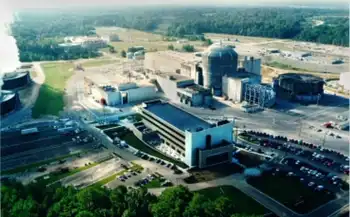Officials await Senate OK to fund unique power plant
By Knight Ridder Tribune
CSA Z463 Electrical Maintenance -
Our customized live online or in‑person group training can be delivered to your staff at your location.

- Live Online
- 6 hours Instructor-led
- Group Training Available
The House approved the money - which would require an equal match from Water Pollution Control Authority - as part of the 2008 Energy and Water Development Appropriations Bill. The money would help pay for a first-of-its-kind power plant using dried sewage pellets as the primary fuel for a gas turbine generator. In addition to powering the Water Pollution Control Authority's sewage treatment plant off Magee Avenue in Stamford, the plant could also return energy to the local power grid. That could produce revenue for the WPCA and meet some demand for an overburdened electrical network. The project is estimated to cost about $20 million, WPCA Executive Director Jeanette Brown said.
"A lot's going to depend on just how many turbines we put in," she said. Stamford officials had sought the same amount as an earmark for the 2007 fiscal year, but Democrats canceled all 2007 earmarks in December after taking control of the House.
"To have this come back as a priority, especially in this area, is great," city Director of Administration Sandra Dennies said. The project has been a favorite of U.S. Rep. Christopher Shays, R-Bridgeport. "We're very, very happy with Chris," Dennies said.
"This is absolutely Chris Shays fighting for his region." The WPCA is using $1.5 million earmarked in 2006 for the project, as well as $1.5 million it raised from revenue bonds to fund the plant's design.
Construction of a $17 million sludge-drying plant that turns treated sewage into pellets started last year, and should be producing pellets by January, Brown said. The energy and water bill also included nearly $11 million for Army Corps of Engineers harbor dredging projects in Norwalk and Bridgeport and research into improved handling of material dredged from Long Island Sound. It did not include $3 million the corps needs for its planned demolition of the Mill River Dam and restoration of the riverbed.
This habitat restoration project - the centerpiece of a city plan to create a central park around the river and a network of trails from Scalzi Park to the Sound - could receive funding in the Senate version of the bill.
U.S. Sen. Joseph Lieberman, I-Conn., touted his support for the project during his re-election campaign last fall. "This is not the end of the Mill River funding," Dennies said. "We still have the Senate side. I'm hoping that Sen. Lieberman is making this a priority. It's my understanding that he is."











